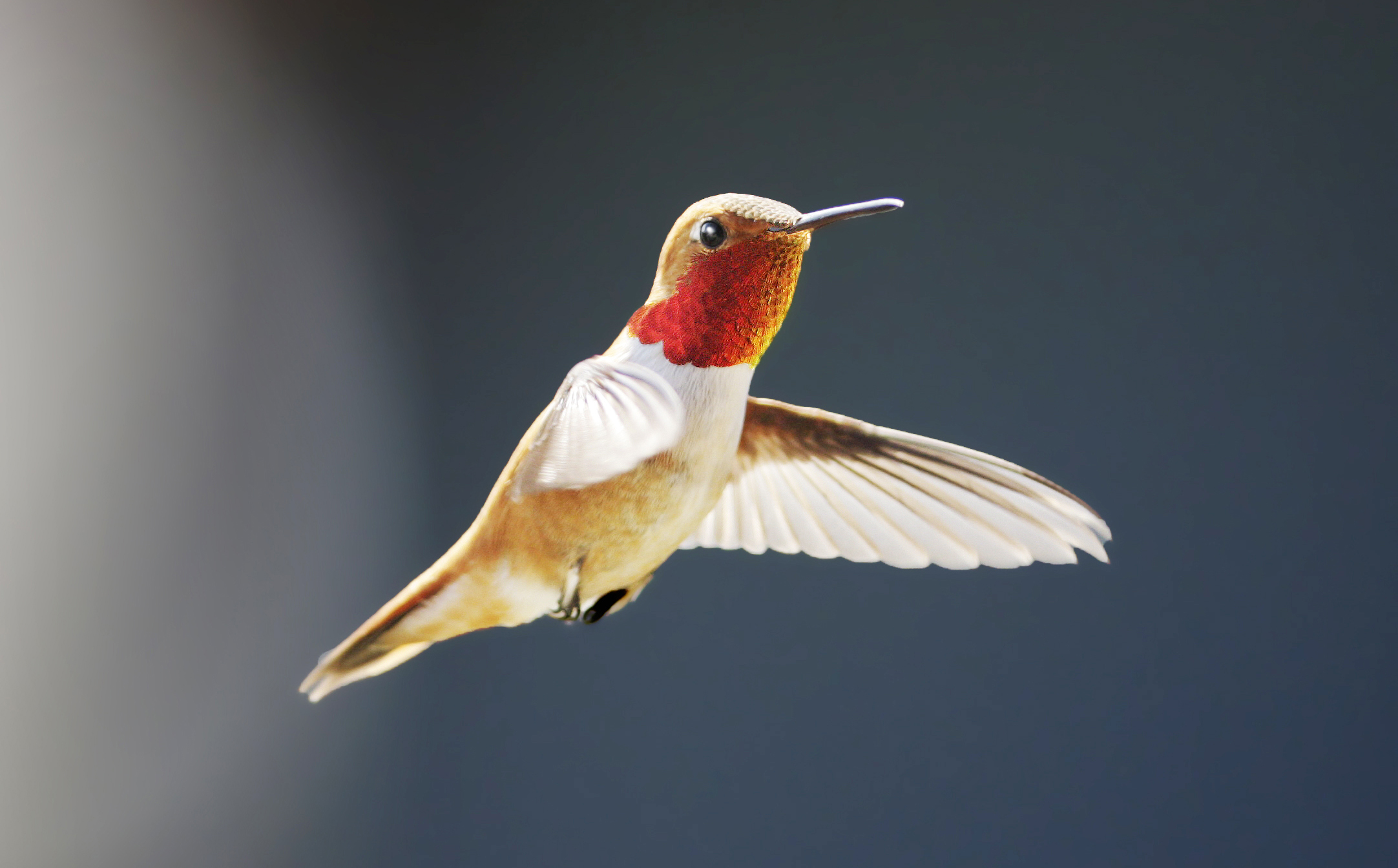

If we keep that in mind, we can make conservation efforts that help these amazingly feisty little creatures - and I describe them that way with the utmost respect - have the resources they need during their migration across the landscape."

"Our results seem to indicate that the age-sex categories could be affected in different ways by things like habitat loss and climate during migration. candidate in the OSU College of Forestry. "Different age-sex categories of rufous hummingbirds use alternative routes and differ in migration cycles and distributions," said the study's corresponding author, Jose?e Rousseau, a Ph.D.
The oldest recorded Rufous Hummingbird was 8 years 11 months old.The findings, published in the journal Avian Conservation & Ecology, are important because the more that is known about how rufous hummingbirds migrate, the more that can be done to ensure birds of different ages and sexes have the resources they need each year on their journey up and down the western part of North America. Hummingbirds are hard to catch, but there are records of Rufous Hummingbirds being caught by a large flycatcher (Brown-crested Flycatcher) and by a frog. The Rufous Hummingbird is not a colonially nesting species however, there have been reports from Washington state that have 20 or more Rufous Hummingbird nests only a few yards apart in the same tree. The wingbeat frequency of Rufous Hummingbirds has been recorded at 52–62 wingbeats per second. Rufous Hummingbirds, like most other hummingbirds, beat their wings extremely fast to be able to hover in place. Of the western hummingbirds that occasionally show up in the east, the Rufous Hummingbird is the most frequent. The Rufous Hummingbird breeds as far north as southeastern Alaska – the northernmost breeding range of any hummingbird in the world. Some birds have been seen returning from migration and investigating where a feeder had been the previous year, even though it had since been moved. The Rufous Hummingbird has an excellent memory for location, no doubt helping it find flowers from day to day, or even year to year. People first realized this pattern after examining detailed field notes and specimens, noting the birds’ characteristic dates of arrival on each part of the circuit. As early as July they may start south again, traveling down the chain of the Rocky Mountains. They move up the Pacific Coast in late winter and spring, reaching Washington and British Columbia by May. During their long migrations, Rufous Hummingbirds make a clockwise circuit of western North America each year. In comparison, the 13-inch-long Arctic Tern's one-way flight of about 11,185 mi is only 51,430,000 body lengths. At just over 3 inches long, its roughly 3,900-mile movement (one-way) from Alaska to Mexico is equivalent to 78,470,000 body lengths. The Rufous Hummingbird makes one of the longest migratory journeys of any bird in the world, as measured by body size. They’ve been seen chasing chipmunks away from their nests. It is extremely territorial at all times of year, attacking any visiting hummingbird, including much larger species. The Rufous Hummingbird is a common visitor to hummingbird feeders. Winter habitat in Mexico includes shrubby openings and oak-pine forests at middle to high elevation. On migration they pass through mountain meadows as high as 12,600 feet where nectar-rich, tubular flowers are blooming. Rufous Hummingbirds breed in open areas, yards, parks, and forests up to treeline. 
Like other hummers, they eat insects as well as nectar, taking them from spider webs or catching them in midair.

They are pugnacious birds that tirelessly chase away other hummingbirds, even in places they’re only visiting on migration. Rufous Hummingbirds have the hummingbird gift for fast, darting flight and pinpoint maneuverability. Females are green above with rufous-washed flanks, rufous patches in the green tail, and often a spot of orange in the throat. In good light, male Rufous Hummingbirds glow like coals: bright orange on the back and belly, with a vivid iridescent-red throat. A fairly small hummingbird with a slender, nearly straight bill, a tail that tapers to a point when folded, and fairly short wings that don’t reach the end of the tail when the bird is perched.








 0 kommentar(er)
0 kommentar(er)
